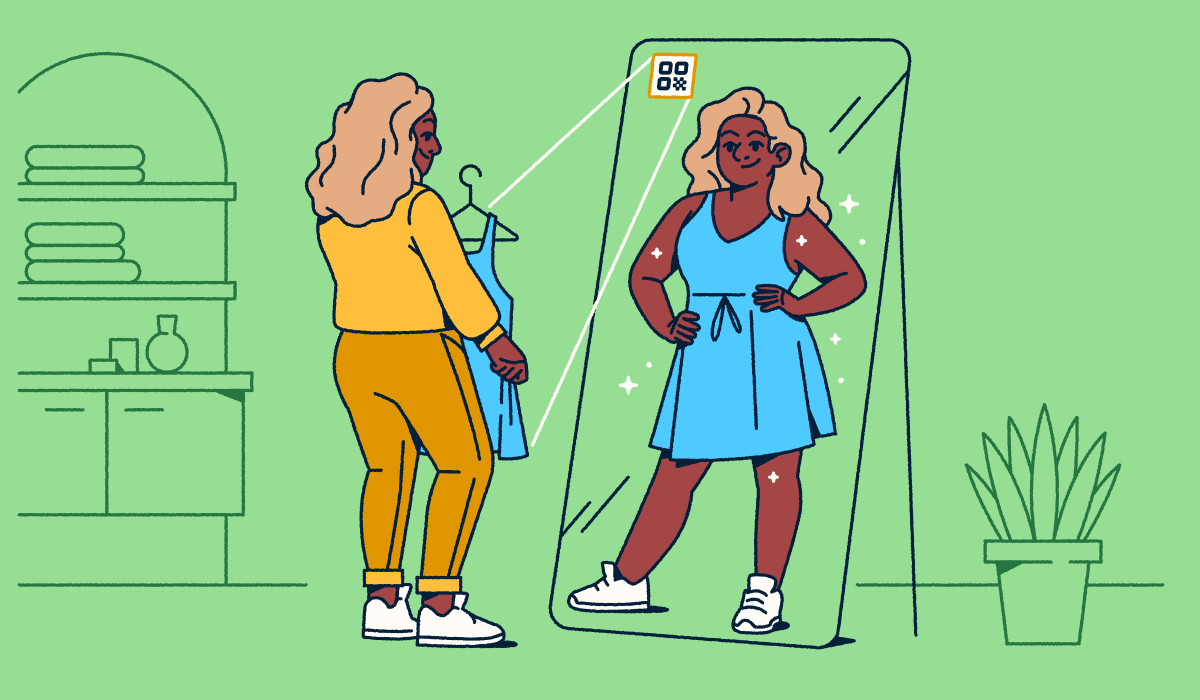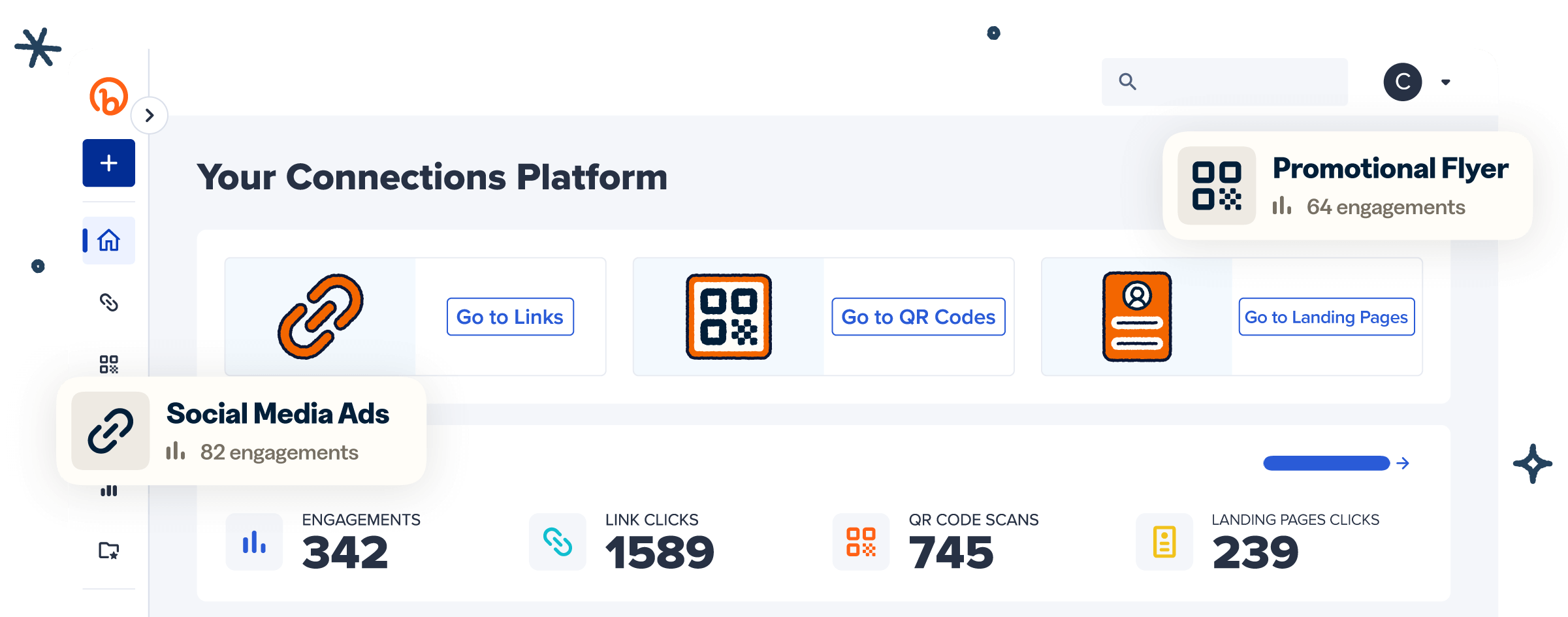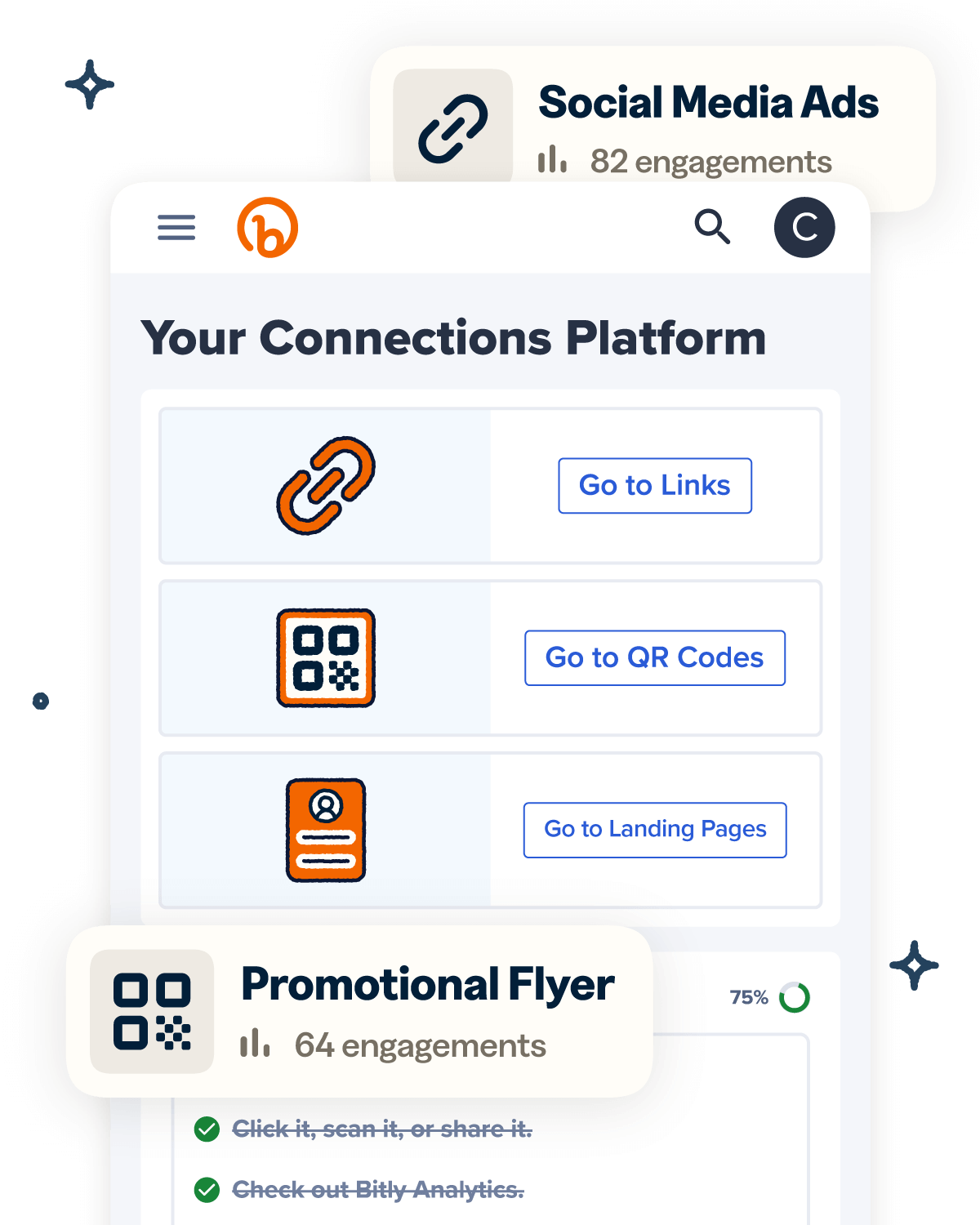Retailers often struggle to convert in-store foot traffic into actual purchases or keep customers engaged after they leave. But there’s actually a single solution that can help you do both: QR Codes.
By integrating QR Codes into in-store displays, signage, and receipts, retailers can offer instant access to discounts, promotions, and a variety of contactless payment options, encouraging immediate purchases and creating a seamless customer experience (CX).
Beyond the checkout, retail QR Codes can foster ongoing engagement by making it easy for customers to join loyalty programs, access special offers, or receive personalized recommendations.
Note: The brands and examples discussed below were found during our online research for this article.
5 Ways QR Codes improve the shopping experience
According to a recent Accenture report, companies that prioritize customer experience realize, on average, 3.5X the revenue growth of their competitors. Here’s how QR Codes can help you take your CX to the next level:
1. Enabling contactless and mobile payments
Contactless payment options may have gained popularity out of necessity, but now, they’re here to stay. And with QR Codes, customers can make secure, digital transactions right from their mobile devices.
After scanning a QR Code with their smartphone camera during checkout, shoppers can quickly pay using a mobile wallet like Apple Pay or Google Pay or through a QR-based point-of-sale (POS) system. This eliminates the need for physical debit or credit cards, speeds up the checkout process, and creates a seamless customer experience.
2. Providing instant product information and reviews
QR Codes also offer a quick and effortless way for customers to access detailed product information, such as allergens, ingredients, and usage instructions. With a simple way to get product details, customers can make informed decisions on the spot, reducing barriers to purchase.
Along with product information, they can also read reviews and ratings to gauge the product’s quality, value, and popularity. Providing transparent access to this information can help build trust and increase confidence, potentially leading to higher conversion rates and improved customer satisfaction.
3. Streamlining in-store navigation
In larger retail stores or crowded shopping malls, in-store navigation can be a challenge. Customers may struggle to find specific products or sections, leading to frustration and potentially lost sales.
QR Codes strategically placed throughout the store can provide customers with interactive maps or guides to help them navigate the aisles, locate products, and even discover exclusive offers or promotions.
4. Unlocking exclusive discounts and loyalty rewards
QR Codes can serve as a gateway to exclusive deals and promotions—like special offers and discounts that customers can only access by scanning an in-store code. This creates a sense of exclusivity and urgency, motivating customers to purchase before the offer expires.
Retailers are also using QR Codes in loyalty programs, both for sign-ups and rewards. When you incorporate them into your loyalty platform, customers can simply scan a code to earn points and redeem perks. This level of convenience encourages sign-ups and repeat purchases, leading to higher customer retention rates.
5. Creating interactive and gamified shopping experiences
Engaging shopping experiences are a solid recipe for memorable customer interactions and increased brand loyalty. With QR Codes, you can create an immersive, interactive in-store experience by:
- Offering virtual try-on options for clothing, accessories, or makeup products.
- Providing access to augmented reality (AR) experiences, allowing customers to interact with products in new, innovative ways.
- Running contests and giveaways where customers can scan codes for a chance to win prizes or unlock exclusive discounts.
Gamification and immersive experiences make shopping more exciting, personalized, and fun for customers, increasing their overall satisfaction with the retail experience.
Examples of how leading retailers use QR Codes to boost sales
Retail QR Codes have nearly endless use cases, and leading retailers and small businesses alike have found innovative ways to incorporate them into their customer experiences.
Walmart: Faster checkout with QR Code payments
Walmart has streamlined its checkout process by integrating QR Codes into its payment system. With Walmart Pay, customers can scan a QR Code at the POS to complete their purchase using any form of payment they’ve stored in the Walmart app.
This innovative approach reduces customer wait times at checkout, improves overall efficiency for the retailer, and provides customers with a secure and convenient payment option.
Amazon: Simple product discovery
Amazon has extended its e-commerce dominance into the physical retail space with its pop-up stores, offering a seamless connection between online and in-store shopping.
Customers can use in-store QR Codes to learn more about products, read reviews, and complete their purchases via the Amazon app. This integration enhances the shopping experience by enabling easy access to Amazon’s vast marketplace—even when customers are in a brick-and-mortar store.
In Q4 2024, Amazon’s physical stores generated $5.579 billion in revenue, highlighting the success of QR Codes in bridging the gap between digital and in-store retail.
IKEA: QR Codes for self-checkout and product info
IKEA has enhanced its customer experience with QR Codes for both product discovery and checkout.
While shopping, customers can scan the QR Codes on products to access detailed information and pricing—and add the items to their cart. Once they’re ready to purchase, they proceed to the self-checkout, where they simply scan another QR Code to complete their transaction.
Sephora—loyalty and promotions via QR Codes
Sephora has integrated QR Codes into its Beauty Insider program (available in the U.S. and Canada) to make loyalty rewards more accessible and engaging. Customers can easily scan QR Codes in-store or through the Sephora app to unlock personalized promotions and exclusive discounts and earn points toward future rewards.
This seamless integration enhances the shopping experience by providing instant access to benefits, encouraging customers to stay engaged with the brand and boosting repeat purchases.
Small business success stories
QR Codes aren’t just for the big names in retail. Small businesses are also harnessing the power of QR Codes to drive conversions and enhance customer experiences. Here’s how a few brands are using QR Codes to grow:
- Wight Tea uses Bitly QR Codes on its product packaging that link to details about the brand’s story and its unique blends, boosting brand engagement.
- Daily Harvest added Bitly QR Codes to clings on freezer doors across Kroger stores. With a quick scan, customers can explore the brand’s products and sustainability efforts, fostering deeper connections and informed purchasing.
- Rad Power Bikes incorporates Bitly QR Codes on hang tags in retail locations. They link customers directly to product pages, where they can explore specifications, compatibility details, and accessory recommendations.
Best practices for retailers using QR Codes
QR Codes give retail stores the opportunity to boost sales, customer engagement, and loyalty. But simply creating and including a few QR Codes in your marketing strategy won’t guarantee results. To harness the full power of QR Codes, follow these best practices:
Strategic QR Code design and placement
Thoughtful QR Code placement and design are critical for successful use. So, when you’re customizing and implementing your codes, keep in mind:
- Size: The minimum QR Code size is at least 2 cm by 2 cm (0.8 in by 0.8 in), but the further away customers will be scanning, the larger your codes need to be.
- Scannability: Use high-contrast colors—a dark code on a light background or vice-versa—and maintain plenty of white space around the code to keep the surrounding design from interfering with scanning.
- User-friendliness: Most people are familiar with QR Codes and know what to do, but a little instruction like “scan with your smartphone camera” can go a long way to encourage adoption.
- Branding: Customizing your codes with your brand colors, logo, and other design elements creates a more cohesive experience and reinforces your brand identity.
- Visibility: Place your codes in relevant locations where customers can easily see and scan them, whether that’s on in-store displays, receipts, product packaging, ads, or social media.
Linking to engaged, relevant content
You also need to make sure you’re linking to the right content in the right places—and that the content is valuable and engaging for your customers. Some great options include:
- Detailed product information, reviews, and ratings for informed purchase decisions
- Personalized offers or discounts to incentivize purchases
- Links to social media pages for user-generated content and customer testimonials
- Links to loyalty programs or subscription sign-ups for customer retention and repeat purchases
- Mobile payment methods for contactless and secure transactions
Whichever use cases you opt for, make sure you include a clear call-to-action (CTA) with every code, such as “Scan to pay with your mobile wallet” or “Scan to join our loyalty program and earn rewards!” A descriptive CTA lets customers know what to expect and encourages more scans.
Integration with marketing strategies
Retail marketing campaigns have to be cohesive and consistent across all channels, including print, social media, in-store advertising, and email marketing. Omnichannel consistency reinforces brand messaging, increases brand awareness, and improves customer recall.
QR Codes can help you add interactivity and multi-sensory experiences to traditional marketing channels like print media while maintaining brand consistency. Codes on billboards or in-store displays can take customers straight to exclusive online offers, landing pages with sign-up forms, or social media pages for ongoing customer engagement.
Track analytics to optimize QR Code performance
Dynamic QR Codes include scan tracking that gives you valuable insights into how, when, and where customers are interacting with your codes. For example, the Bitly Analytics dashboard delivers real-time engagement metrics like:
- Total scans
- Scans over time
- Scans by referrer
- Top-performing codes
- Scans by location (city/country)
- Scans by device (iOS/Android)
You can use these metrics to refine future marketing strategies and identify new opportunities for customer engagement.
Boost sales and take your CX to the next level with Bitly
QR Codes are a powerful tool for retailers looking to enhance customer experiences and drive sales. QR Codes simplify the shopping journey and encourage more in-store purchases and online engagement by offering instant access to product information, personalized offers, and seamless payment options.
But you’ll need the right QR Code generator to make the most of your codes, and Bitly makes it easy to create, customize, and track Dynamic QR Codes for nearly any use case.
With Bitly, you can fully personalize your codes to match your branding and update their destinations at any time, even after printing. Plus, Bitly Analytics shows you how your codes are performing, so you can keep iterating for maximum results.
Leverage QR Codes to optimize your retail experience at every touchpoint—get started with Bitly today!




